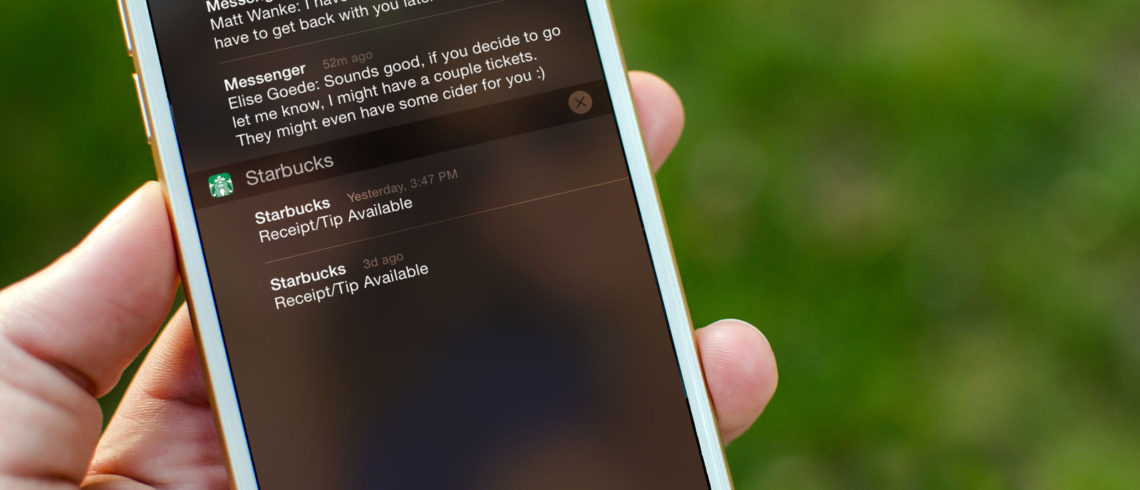Reaching consumers at the right time, in the right place, to give them a promotional message or create a connection. It’s a marketer’s dream. And it’s a golden opportunity, when 50% of Belgians have a smartphone in their pockets. Sending push notifications through a mobile app is the perfect solution for the brands. But this high-performance tool shouldn’t be wasted.
More than half of all Belgians have a smartphone in their pockets and use their apps several times a day. Some studies show that we look at our smartphone screens every six minutes, even though most people still use the same few apps. That’s why so many app developers and publishers want to get users’ attention with push notifications. These little red dots or notes, sometimes accompanied by a sound or vibration, pop up on the home screen and/or the app’s icon… even if the user isn’t looking. What’s the point? To get users’ attention and push them to go into the app, thereby saturating the audience, usage or link with the brand or business name.
Amazing benefits
- First off, sending notifications is free. In fact, everything is handled by Apple and Google and their respective platforms (iOS and Android). There’s no need to rent cumbersome servers or use a heavy mailing infrastructure. So even when you use an external partner (an agency), your push marketing will cost very little – much less than SMS or email marketing!
- The principle of push notification is that it’s an integral part of an app that smartphone owners have voluntarily installed on their phones. And if they’ve kept it, that means they like and trust it. In other words, they have a real interest in it, which means they’re potentially more open to any messages they receive through it.
- Needless to say, of course, push notifications are geolocalized. A key element of any effective mobile marketing campaign is that a push notification can be sent according to your users’ location. This carries enormous promotional potential.
- Push notifications are sent instantly, even to huge volumes of users. So they’re perfect for reacting quickly to an event, a major news story, an accident, and more.
- Sending push notifications regularly is proving to be more effective than email marketing, even as that continues to grow. Email actually has a tendency to get buried in the inbox pretty quickly. But push notifications can appear on the smartphone screen (we hardly need to tell you how powerful that display is!) and stay in “alert mode” via a red dot on the app’s logo. This is especially relevant for reaching the youngest users, who use their traditional email addresses less – if at all.
- Like an email marketing campaign, push notification lets you do intelligent, targeted marketing. As long as you have integrated certain tags in your mobile app, you can very easily group your users by target group. As it uses a certain section of the app, you can get to know your public more, and target your notifications better. This means a more relevant result that your users will find much less intrusive.
- Push notification is already growing. In fact, it can already be interactive, and soon, it will be improved… making it even more attractive and effective.
Danger ahead
With all these benefits, it’s clear that push notifications can be a powerful weapon for any marketer. But you still have to approach it judiciously and strategically, so it doesn’t lose its punch. Using it just any old way could limit your users’ engagement. They won’t think twice about cutting off the connection with your business or brand. In fact, if your users get the feeling they’re receiving too many notifications, they won’t hesitate to deactivate them – or, worse, just delete your app from their smartphone!
There’s no denying that a real risk exists of abusing this tool. Some publishers push a few too many notifications. Certain media outlets, for instance. So instead of encouraging users to use the app more, the practice has the opposite effect of pushing them away, just like spam – with the risk of annoying users. The sensible, respectful use of notifications should make this marketing method last, and demonstrate its many benefits.
Astute opt-in
Just as when using your customers’ emails for marketing and promotional purposes, sending push notifications via your app is based on the “opt-in” function. In other words, the people who download your app must agree to receive your alerts. They can’t be forced. And, strategically, it can be interesting to let them discover the app before asking them to activate notifications. No need to jump at them on the first screen. The opt-in can be suggested at different points. It can be scheduled, for instance, after five or six launches of the app, or after 15 minutes of use. The advantage you still have is that most users have not yet been too bothered by notifications, so most users who have a minimum level of trust in the app they’ve just installed will accept them. And if they refuse to receive your notifications, there’s probably no point in reminding them. Remember: in a notification campaign, just like in email marketing, the issue is volumes!
User monitoring
Next, provide methods in your app for getting to know your users. This can be done by reporting, i.e. (subtly) asking your users about their tastes and interests. In your app’s settings, for instance. Then you’ll know which types of notifications to push to specific targets. It can also be done using systems that monitor your users’ apps (analytics). You can use analytics to complete your customer profiles, to better target the messages you’re sending them.
The issue is clear: by being more targeted, your notifications will interest your users that much more, and will end up being less intrusive, less bothersome… and more successful. That’s why all the Internet players (Google, Facebook, etc.) are scrambling to get to know their users, so they can offer them ever more targeted advertising. Push marketing is still in its early stages, but it has enormous potential. Many still underestimate this communication channel, but those who are active in the sector are getting organized and already improving their technique considerably. And tomorrow, they will be marketers’ most powerful weapons.


